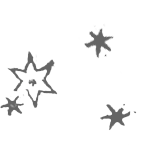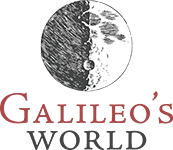Browse the Exhibition
Music and astronomy were taught as complementary sciences, and both were understood as subdisciplines of mathematics in Galileo’s world. The harmonious motions of the planets created the music of the spheres.
In the Republic of Venice, Galileo’s day-to-day work as a professor of mathematics was that of a scientist-engineer. City officials and notable individuals called upon his expertise to solve civic, military and nautical problems in engineering.
Science has traditionally played a key role in cultural exchange. Johann Schreck, one of Galileo’s friends a member of the Academy of the Lynx, went to China and taught astronomy.
Galileo’s controversy over the comets illustrates how difficult it can be to implement novel research methods in science.
In 1638, Galileo published his masterwork of physics, Discourse on Two New Sciences. The two sciences were tensile strength and mechanics, the study of machines in motion.
Sometimes in harmony, sometimes in conflict, science and religion interact in diverse and historically contingent ways. The Galileo Affair turns out to be much more complicated than a simple conflict of science and religion.
Galileo Today examines how the concepts pioneered by Galileo and his contemporaries have shaped our understanding of research and exploration.
When Galileo pointed his telescope toward the moon, he discovered rugged and mountainous landscapes similar to Earth’s terrain. In a short treatise, Galileo reproduced his observations through detailed illustrations.
Astronomy, optics, chemistry and the Earth sciences are just a few of the disciplines once studied in close association with meteorology. Throughout history, meteorologists have adopted innovative methodologies to address emerging research problems that require multidisciplinary expertise.
The Kepler space telescope launched in March, 2009, to search for terrestrial planets around other suns. One month later, five Jupiter-like planets had been discovered. As of 2015, the Kepler telescope has discovered a total of 1,000 confirmed planets.
Galileo’s experiments and innovative scientific instruments opened up new worlds of discovery. His thermoscope facilitated quantitative comparison of temperatures over time and under varying circumstances.
With his telescope, Galileo discovered mountains on the Moon, four satellites of Jupiter, the phases of Venus, dark spots tracking across the face of the Sun, the enigmatic “ears” of Saturn, and countless stars that were invisible to the unaided eye.
Science On a Sphere® (SOS) is a room sized, global display system that uses computers and video projectors to display planetary data onto a six foot diameter sphere, analogous to a giant animated globe.
Aviators, astronauts, scientists and engineers from Oklahoma have participated in aerospace activities throughout the history of the state. This special exhibit explores how the pioneering spirit that brought space scientists’ to Oklahoma also inspired them to explore the new frontier of space.
The king of Spain commissioned a physician, Francisco Hernandez, to compile Native American plant and animal knowledge. Hernandez worked closely with Aztec artists and physicians in central Mexico.
Galileo and the Academy of the Lynx, or Accademia dei Lincei, were responsible for the first published report of observations made with a microscope (Apiarium, 1625), as well as with the telescope.
Galileo and Sports examines the role of fitness, anatomy, and the physics of sport from Galileo’s world to today.
In the Starry Messenger (1610), Galileo reported his discovery of four satellites of Jupiter and mountains on the Moon. These sensational telescopic discoveries would have been impossible were it not for Galileo’s training and experience in Renaissance art.
Galileo studied medicine and was once called as an expert medical witness in a trial. It was a friend of Galileo’s, who was a physician in Venice, who invented a device to measure the pulse, called the pulsilogium.
When Galileo announced that “mathematics is the language of nature,” he was making a then-controversial claim about how nature is best known and understood.

























